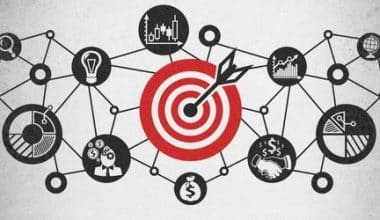Let’s face it, driving top-line revenue is the lifeblood of any business. It’s that exhilarating number that reflects the success of our hard work, our product, and our connection with customers. But in today’s competitive landscape, simply maintaining our current position isn’t enough. We need to find ways to strategically push that number even higher. That’s where Top-Line Revenue comes in.
These are the battle plans, the roadmaps, the secret weapons we use to not just maintain, but dramatically increase our top-line revenue. We’ll be diving deep into proven tactics that have helped businesses of all sizes explode their top-line revenue. Not just that, we’ll explore how to calculate top-line revenue and leverage the power of customer retention. So, buckle up and get ready to discover the secrets to supercharging your top-line revenue!
Key points:
- Top-Line Revenue as the Pulse of Business: The article emphasizes that top-line revenue is the heartbeat of any business, reflecting its success in converting consumer interest into tangible sales. It’s depicted as the ultimate measure of a company’s sales engine efficiency, crucial for gauging business performance.
- Calculating Top-Line Revenue: Using a simple lemonade stand analogy, the article simplifies the concept of calculating top-line revenue, highlighting its significance as the total income before deducting any costs. This basic yet essential calculation forms the foundation for evaluating revenue growth and planning business budgets.
- Strategies for Boosting Top-Line Revenue: The article delves into various strategies for optimizing top-line revenue, ranging from product innovation and market expansion to customer acquisition and retention. It underscores the importance of continually evolving and adapting tactics to drive sales growth effectively.
- Understanding the Difference Between Revenue Metrics: It distinguishes between top-line revenue and revenue, emphasizing that while revenue accounts for total cash from sales, top-line revenue represents gross income before expenses. This differentiation underscores the importance of balancing sales volume with profitability.
- EBITDA’s Role in Financial Assessment: The article discusses the complementary relationship between top-line revenue and EBITDA, highlighting EBITDA as a measure of operational efficiency. It stresses the significance of EBITDA in assessing profitability by considering operational expenditures, thus offering a more nuanced view of a company’s financial health.
What Is The Top Line?
Ever wonder what that magical number at the top of a company’s report card is? That my friend is the top-line revenue. The top line refers to a company’s revenues or gross sales. It’s the big kahuna.
Think of it like your paycheck before taxes and bills. It reflects the raw power of your sales engine, how effectively you’re converting customers and turning interest into cold, hard cash. As a result, when a firm has “Top-line growth,” it means that its total sales or revenues have increased.
READ ALSO: WHAT IS EBITDA IN FINANCE? Importance & How to Calculate It
How Do You Calculate Top-Line Revenue?
Imagine you run a lemonade stand on a scorching summer day. Every glass you sell, adds to your top-line revenue. That’s the basic idea! Top-line revenue is the entire amount of money your company makes from consumer purchases. You calculate this amount by summing up all of your revenue over a given time period. This is where you begin in determining revenue growth in your business and budgets for different activities.
So, while top-line revenue gives you a quick snapshot of your sales performance, it isn’t the whole financial picture. But it is a crucial one! Because a higher top-line revenue generally means more sales and a successful business! The more lemonade you sell, the more money you make, right? It’s the same basic concept for any business, big or small.
Growth Strategies For Optimizing Top-Line Revenue

Imagine top-line revenue as your company’s rocket fuel. It’s the number that tells you how much money you’re bringing in, and let’s be honest, a bigger number is way more exciting. But how do we take that number from “meh” to “holy moly”? That’s where strategies for optimizing top-line revenue come in. When it comes to boosting top-line revenue, there are several strategies worth considering:
- Product Innovation: Constantly innovating and improving your products or services can attract new customers and encourage existing ones to spend more.
- Market Expansion: Identify new markets or segments where your offerings could thrive and develop targeted marketing campaigns to reach them.
- Customer Acquisition and Retention: Implement strategies to attract new customers while also focusing on retaining existing ones through loyalty programs, excellent customer service, and personalized experiences.
- Pricing Optimization: Pricing Optimization, Conduct thorough market research to ensure your pricing strategy is competitive yet profitable. Consider dynamic pricing models and bundling options to maximize revenue.
- Sales and Distribution Channels: Explore new sales channels such as online marketplaces or partnerships with other businesses to expand your reach and accessibility.
- Strategic Partnerships and Alliances: Collaborate with complementary businesses to access new customer bases or enhance your offerings, leading to increased revenue opportunities.
- Investment in Marketing and Advertising: Allocate resources towards effective marketing and advertising campaigns to increase brand visibility, generate leads, and drive sales.
- Streamlining Operations: Identify inefficiencies in your processes and operations to reduce costs, improve productivity, and ultimately increase profitability.
READ ALSO: HALLOWEEN GIFTS: 30+ Halloween Gift Ideas
What is The Difference Between Top-Line and Revenue?
It’s easy to get caught up in the thrill of seeing revenue climb, that big number, tells you how much money your business is bringing in. But hold on, there’s a key distinction to understand: top-line revenue versus just plain revenue. They might sound the same, but they paint different pictures. Think of your business as a baker selling delicious cookies.
Revenue? That’s the total amount of cash you bring in from selling those cookies. Every sale rings up as revenue. But top-line revenue? That’s the total amount charged for those cookies before you subtract any costs. It’s the gross income, the big picture before expenses eat into your profits.
So, if you sell a dozen cookies for $10 each, your revenue is $10 multiplied by 12 = $120. But if it costs you $5 in ingredients and another $5 for packaging to make those cookies, your top-line revenue stays at $120, while your actual profit shrinks after those costs are deducted. Understanding the difference between these two is crucial. Chasing top-line revenue is great, but it’s the profit that truly matters for your business’s long-term health. That’s why we need to optimize both – selling more cookies (revenue) and keeping our costs under control to maximize that delicious profit.
Business Yield Checklist for Optimizing Top-Line Revenue
What is The Difference Between Top Line Revenue and EBITDA?
EBITDA and revenue are both useful indicators for calculating business performance. Imagine your business is a fruit stand. Top line revenue, that’s the overflowing basket of apples, oranges, and mangoes you sell each day. It’s the total cash coming in before you subtract any expenses. It’s a fantastic indicator of how much customers love your produce, but it doesn’t tell the whole story.
The key distinction between EBITDA and revenue is that EBITDA represents a company’s total profits less operational expenditures. In contrast, revenue is a company’s entire income before subtracting any expenditures. It’s, like peeking under the stand. It considers all the costs that go into keeping those apples fresh and the oranges stocked. We add back expenses that don’t directly affect daily operations, like interest on loans or taxes paid. EBITDA helps us understand how efficient we are at turning those sales into actual profit.
While top-line revenue is all about volume – how much are we selling? EBITDA zooms in on efficiency – how much of that revenue translates into real profit after accounting for the nuts and bolts of running the stand. Both are crucial. High top-line revenue is great, but without a healthy EBITDA, it’s like having a ton of apples but no money to buy the next truckload. EBITDA helps us identify areas for improvement – maybe we can negotiate better deals with suppliers or streamline operations to keep more of that top-line revenue as profit. Ultimately, both metrics work together to paint a clear picture of the financial health of our little fruit stand, or any business for that matter.
READ ALSO: HOW TO VALUE A BUSINESS: Detailed Guide
Why Use EBITDA Instead of Revenue?
EBITDA is a broader financial phrase than revenue since it includes a company’s operational expenditures. On the other hand, revenue just represents a company’s entire income. EBITDA is calculated by adding back interest, taxes, depreciation, and amortization to net income.
Imagine revenue as your company’s entire haul after a farmer’s market. It includes everything you sell, from juicy peaches to beautiful scarves. EBITDA takes that haul and gets real. It subtracts non-operating expenses – things like interest on loans and taxes – that don’t directly reflect how well your core business is running. It also removes depreciation and amortization, which are accounting terms that spread out the cost of big-ticket items like machinery or software over their lifespan.
Why? Because depreciation doesn’t involve actual cash leaving your pocket today, even though it impacts reported profit. EBITDA helps us see the true cash-generating power of your business, like how many peaches you can realistically keep selling after expenses. This is especially useful when comparing companies.
A bakery with fancy new ovens might have lower reported profits due to depreciation, but its EBITDA could be higher than a competitor using older equipment. EBITDA isn’t a magic bullet, but it’s a powerful tool to see past the surface and understand how effectively your company is turning sales into cash – the fuel that keeps us growing!
Conclusion
Growing top-line revenue is the lifeblood of any business. It’s the fuel that propels us forward, the metric that tells us we’re on the right track. But let’s face it, simply maintaining where we are isn’t enough. We need to be strategic, to constantly push that number higher.
That’s where these growth strategies come in. They’re not magic tricks, but a toolbox packed with proven tactics. We’ve explored how to target the right audience, the people who become raving fans, not just one-time customers. We looked at how to optimize pricing models, ensuring we capture the value we deliver without alienating our customer base.
By implementing these growth strategies, we’re not just giving our top-line revenue a boost, we’re building a sustainable future for our business, a future brimming with exciting possibilities. Let’s go make it happen!
Profit and Loss Statement Explained!!! How to Read & Create P&L Statement
RULE OF 40: Meaning, SAAS, Calculations & All You Need (+ Best Tools)






